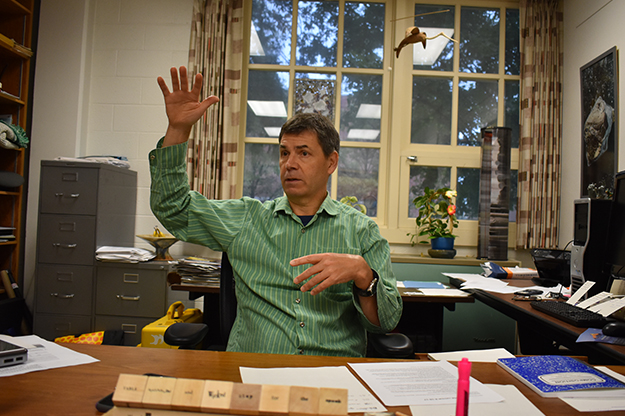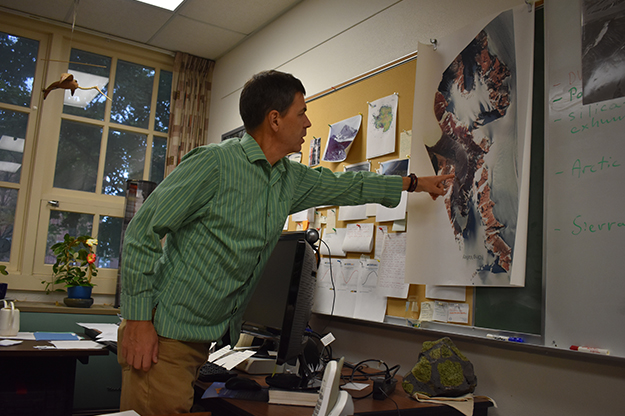Southern comfort
UND scientist, grad in Antarctica on ‘summer’ quest for the oldest ice on Earth

What to do when the weather turns blustery cold up here?
For Jaakko Putkonen, a trip to someplace where it’s summer seems appropriate.
“Yes, it’s summer in the southern hemisphere now,” says Putkonen, a geomorphologist and a well-known expert in the geology of the Earth’s frigid zones.
Putkonen and graduate student Marie Bergelin have been on the barren continent of Antarctica for a little over a month now on a trip funded by the National Science Foundation (NSF).
“We are chasing the oldest ice on Earth,” said Putkonen, who’s led several Antarctic research trips from UND. “The ice provides us with a rare archive of what was blowing in the wind at the time the ice formed. Very few similar archives exist on Earth and even fewer that approach the age of the ice we have found.”
Familiar territory
While in Antarctica, they’ll head to familiar territory – a dry valley (no exposed ice) where Putkonen has spearheaded two previous expeditions – to collect cores from some 20 meters (about 60 feet) down. The team will bring those cores back to UND and store in a freezer.
This is a large effort, notes Putkonen, who also teaches courses in the Himalayas and has done research in most of the Earth’s coldest, remotest areas.
“It’s a cooperative effort involving three institutions: the Berkeley Geochronology Center, Vanderbilt University, and UND,” said Putkonen. Plus there will be additional folks helping them to get the job done.
“This is the largest project I’ve run in Antarctica—the field team consists of seven people, plus two fixed wing planes and two helicopters to help us bring in all the equipment—including the drill rig—we need to accomplish our mission,” Putkonen said.

Core evidence
Putkonen says that just because they are working in a so-called dry valley doesn’t mean there’s no ice at all—in this location, the glacial ice is buried under three feet of dirt.
“We have previously dated the dirt and by inference, the ice under the dirt must be older, so our job this time is to get ice cores so that we can directly date the ice,” Putkonen said. “We get those cores in the same way they are extracted in western North Dakota to explore for oil.”
“Dating the dirt in the ice will help us date the ice, as they share the same history,” he said.
The team will be on the ground at a campsite in the remote valley for about five weeks. The entire trip will take two months due to transits, training, safety session and survival coaching.
“All of Antarctica, including the area we’ll be in, is under international treaty. Nobody owns the land,” Putkonen said. “It’s governed by 50 signing countries.”
Portals to prehistory?
The Antarctic processes are unique.
“In Antarctica, there are some processes that occur nowhere else on earth. They may be found on other planets like Mars, but it’s much easier to study things here than on Mars,” Putkonen said.
“It boils down to fundamental question: How does the Earth work?” Putkonen said.
Putkonen aims to date the ice, figure out its sublimation rate and thus the minimum age of the ice. On an earlier expedition, he found evidence that the ice is millions of years old. This trip, he hopes to date the ice itself.
“We may have, in our hands there, the oldest ice on Earth, which opens opportunities to see what Earth was like 2 million years ago or more,” Putkonen says. “The air bubbles in ice will show what atmosphere was like by analyzing the CO2 content, pollen, microbes, soot and the like.
“They will tell us directly about the environment and conditions that existed on Earth millions of years ago.”


